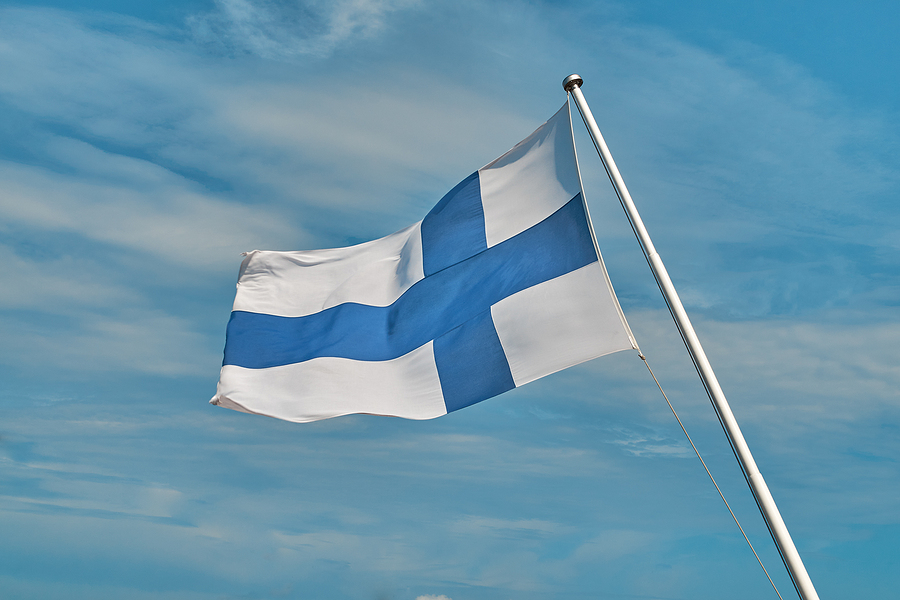According to a news release on the Finnish Ministry of Defence website, the Finnish government has released its latest defence white paper.
At its meeting on 9 September 2021, the Government approved the Defence Report to be submitted to Parliament.
The Report and its implementation ensure that Finland’s defence capability meets the requirements of the operating environment. The Report and its implementation will extend until the end of decade.
Finland’s defence environment remains tense and difficult to predict. In addition to the land, sea and air domains, cyber and information environments and space are highlighted. The importance of the neighbouring Arctic regions is growing.
The defence administration prepares to counter broad-spectrum influencing, together with other actors, as part of the evolving national comprehensive security model. Interagency cooperation must be further developed in the fields of cyber defence, strategic communication and information defence. Threats to the cyber operating environment and related national development needs will be assessed in more detail in a new study.
The Defence Report will reorganize the force structure of the Defence Forces wartime units. In the future, wartime troops will be divided into operative and local troops. The number of local troops will be increased from 2025 by transforming the majority of the regional troops into local troops. At the same time, the range of duties of local troops will expand and the standards will rise. The importance of cooperation between authorities and the role of reservists will be emphasised.
The cost savings obligations directed at the Defence Forces during previous years and the currently available resources make it challenging to maintain activities and readiness on the current level. This also restricts preparations for a crisis or warfare of long duration.
The maintenance of readiness, training of conscripts and the development of new capabilities require a gradual increase in the number of personnel in the Defence Forces by 500 person-years by the end of the 2020s.
Close international defence cooperation strengthens Finland’s defence capability. Finland must have the ability to work together with key partners, based on a separate decision, in all security situations affecting Finland, including during a crisis.
While the President and the Ministerial Committee guided the preparation of the Government’s Defence Report, it was prepared as in a cross-governmental cooperation and the Parliamentary Monitoring Group was consulted. This is the second Government Defence Report; the previous one was completed on 16 February 2017.
In the white paper, the nature of the Russian threat was underscored and highlighted as follows:
Russia maintains significant conventional warfighting capabilities in Finland’s neighbouring areas and has, during the past few years, increased its military capacity in particular in its western region. It has continued the modernisation of its armed forces, and has developed their operating procedures by incorporating combat experiences from recent operations.
The ability to make rapid decisions and the high readiness of its armed forces enables Russia to carry out rapid and unexpected operations. Different methods, such as prolonging conflicts, are used to achieve desired goals. Russia has demonstrated its ability to use this wide selection of methods in a coordinated manner, with military force still playing a central role.
Russia has illegally annexed Crimea and maintained the conflict it started in Eastern Ukraine. In the spring of 2021 Russia concentrated a large number of military forces in Crimea and on its border with Ukraine. Its activities, for example, in Georgia, Ukraine and Syria demonstrate that the threshold for threatening to use or using military force to try and reach a political goal has lowered.
During the last few years, Russia has positioned some of its most technologically advanced weapons systems and increasingly more capable forces close to Finland. It regularly conducts joint service exercises, and its ability to project military force in a swift and surprising manner has improved. Long-range weapon systems, such as cruise missiles, enable Russia to extends its military capabilities beyond its borders, and restrict the freedom of action of other actors.
Russia conducts exercises and operates actively outside its territory, which could escalate tensions. Furthermore, it has strengthened its strategic nuclear deterrent, and hardened its nuclear rhetoric.
If you wish to see a similar view in Europe, one can go to Poland where the deep concern with the border operations of Belarus are highlighted as well as part of a broader Russian strategy.
The report was published in full on the Finnish Ministry of Defence website.
Or it can be read in e-book form below:
Finland is a key player in the strengthening of Nordic defence cooperation and provides a signifiant example of a state and people focused on resilience as a key element of defense capability.
The Australians are clearly looking at ways to enhance resilience as well as Poland in Europe. The return of Norway to a “total defence concept” goes down the same lines.
As the post-pandemic recovery process takes hold, what place will secure supply chains play in the way ahead for the European Union states?
As we wrote in our book on the Return of Direct Defense in Europe:
The Finns are shaping a way ahead for themselves, with their neighbors and are a key stakeholder in shaping a new approach to Nordic and Northern European defense. This is a long way from “Finlandization.”
Also, see the following:


